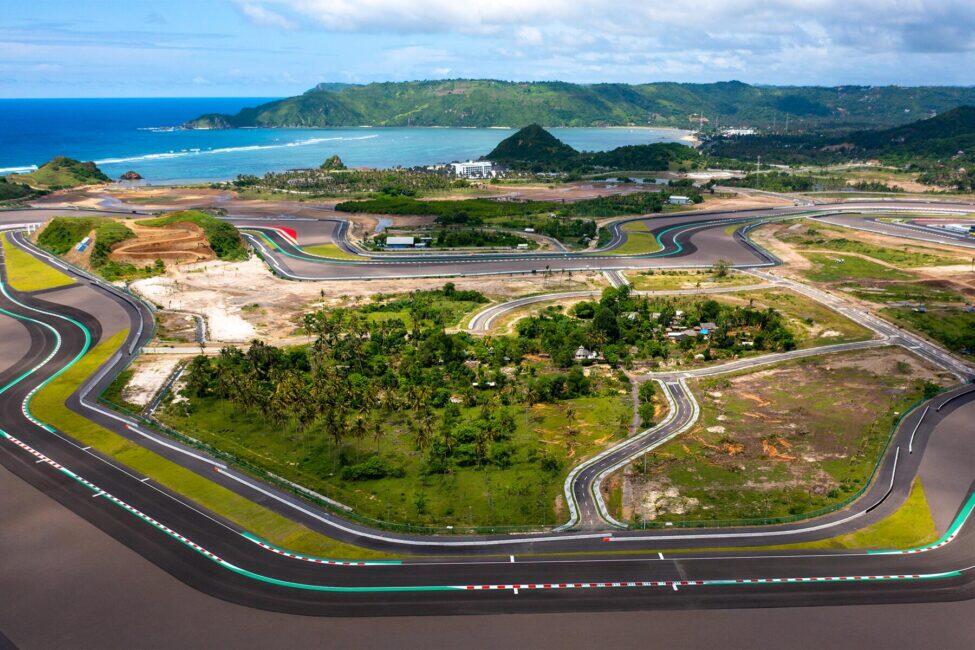Every year the Sasak people gather to catch sea worms as part of a unique tradition in Lombok. But tourism development projects are encroaching on the land.
The island of Lombok in Indonesia is a peaceful, relaxing place. Despite being labeled “the island next to Bali,” it sees only a handful of tourists and a fraction of development compared to its big sister. Lombok’s south coast is particularly quiet, with wide stretches of white sandy beaches and clear blue water rolling out under swaying palms. By all accounts, it is the dictionary definition of “tropical paradise.”
But on the night of Bau Nyala all that changes. In the dark, early hours of the morning, thousands of people descend upon Seger Beach and the surrounding coves. They come armed with torches, buckets, and nets, waiting excitedly for a phenomenon rooted in ancient folklore. These are the Sasak people—the Indigenous tribe of Lombok.
I met with Pak Adi the evening before the main event. He owns a local warung (restaurant) right on the sands of Seger Beach and his knowledge of Bau Nyale is unrivaled. Standing proud on the empty stretch of sand, he spoke to me about the festival.

The local Sasak tale goes that once upon a time in the Tonjang Beru kingdom, there lived a beautiful and kind princess named Mandalika. Suitors from all over the land were enamored by her, traveling far and wide for a chance at her hand in marriage. The fierce competition sparked tension and bitterness amongst the suitors, so the king asked them to fight one another—the winner would get to marry his daughter.
Recommended Fodor’s Video
Princess Mandalika refused to see people fighting over her. Desperate for a solution, she invited all her suitors to Seger Beach just before dawn. She climbed up to Seger Hill and addressed everyone, saying she would accept every one of her suitors’ marriage proposals. On that dramatic note, she threw herself off the hill and into the crashing waves below. When people went in search of her, all they could find were sea worms. Her body was never found and it’s believed that she was reincarnated as these sea worms. Her suitors and everyone in the land each had their own share of the worms and peace was restored once again.
The princess appears once a year for her suitors to see her, every 20th of the 10th month in the Sasak calendar, or around February and March. On these dates, thousands of sea worms appear in the waters of Lombok’s south coast. Young and old frantically wade into the sea to collect the worms, the skies filled with elated whooping and hollering as the waves reveal their wriggling, multicolored treasure.
“To this day, this history has been passed down through generations. I’ve been coming every year since–I can’t remember!” Pak Adi laughed. “I’ve been coming here for decades. My ancestors have always come here.”
These Worms Are a Delicacy
Bau Nyale, or “catching sea worms,” is an important event to the Sasak. The worms signify prosperity and fertility with farmers often using the worms as fertilizer for their crops in the hopes of a full harvest.
Eating the worms is also believed to bring good fortune. They can be eaten raw and yes, if you’re wondering, I did try one. The worms almost dissolve in your hand if you’re not careful and in the mouth, they have a somewhat mushy texture. The initial taste is a bit bland, with an earthy, salty aftertaste.
As one girl put it, busy focused with net in hand and head down, eyes glued to the water: “I don’t really like them because the texture is a little slimy, but I still think they’re a delicacy because we only get to eat them once a year.”

The worms are often preferred when cooked. “It’s especially tasty if you make it into pepes,” Pak Adi insisted. To make pepes, worms are mixed with grated coconut and spices, wrapped in banana leaf, and roasted over a fire. Alternatively, some cooks choose to preserve the worms with salt and shrimp paste to use as a pungent flavoring that can be enjoyed year-round. The sea worms can also be fried, added to soups, or eaten with local herbs.
First and Foremost a Social Event
As well as paying homage to an old tale, Bau Nyale is a much-anticipated social event. The festival is packed with shadow puppet shows, boat racing, and traditional poetry reading.
The most popular event is peresean, a Sasak martial art. Two men take to an arena to fight with sticks and shields. If it sounds violent that’s because it is, to a certain degree. Whoever is hit on the head first loses (with a rather nasty wound to show for it). Traditionally, the head wound must bleed a little, but nowadays bandaged head scarves help prevent injuries. Peresean is often held during ceremonies, including Indonesia’s independence day celebrations.

Meanwhile, young ladies get their chance at playing princess. A beauty pageant and street carnival are held where women dress in traditional Lombok attire. There are different titles to be won, including Princess Mandalika of Tourism and Princess Mandalika of Culture awards. Winning is a great honor and source of pride—the chance to represent Lombok.
Some men even attend in hopes of catching their own princess. Indeed, the worms are engaged in a mating ritual of their own. Affected by the lunar cycle, they release their eggs or sperm at the water’s surface.
As younger generations hold hands and flirt amongst the rolling waves, distracted by potential suitors, the worms make a dash for it, only to swim right into the waiting nets of older couples who cling to each other with much more focus and determination, scanning the waters for this precious delicacy. As the tide rolls out, children shriek with laughter, frolicking in the rockpools. This is an event as much about the social aspect as it is about the worms.
“I come here every year. I used to come when I was a boy, and now I bring my kids with me,” said one man as he dragged his net through the channels, his head torch almost blinding me. Beside him, his daughter inquisitively picked away at the large bucket full of writhing worms.

“My favorite part about coming here is the social aspect. I like hanging out with my friends and meeting new people. I love the atmosphere and the crowd,” said another attendant.
It’s hard not to get caught up in this electric, carnival-like atmosphere.
The Future of Bau Nyale
As with many natural places, modern development is encroaching upon Lombok’s south coast. The past few years have seen drastic changes in the area with the construction of the Pertamina Mandalika International Street Circuit. A venue for the Asia Talent Cup, Superbike World Championship, and Grand Prix motorcycle racing races, this development is part of the Indonesian government’s plan to build new tourism hotspots outside of Bali—President Joko Widodo’s vision of five “new Bali’s.”
It has not been an easy few years for Lombok and it’s hoped that the new racetrack will bring in much-needed tourist dollars, helping to boost a local economy that has been derailed by the pandemic, hot on the heels of a large 2018 earthquake. The track sits directly behind Seger Beach—a visually striking image of the new direction the island hopes to take, juxtaposed with an ancient cultural festival that dates back centuries.
In order for the track to be built, several Sasak communities had to be relocated, their villages gone forever. Naturally, there have been some concerns about the future of the festival as development continues at a great pace.

“It’s imperative that we are able to continue Bau Nyale every year. The people must be allowed clear access to this beach,” said Pak Lalu, a local Sasak leader.
As Lombok embarks on a new chapter, embracing a future in which tourism is the key driving component, it can be hard to see where a festival such as Bau Nyale fits in. The Sasak people, aware of tourism’s ability to eradicate a local culture, intend to find a balance between the two.
What’s certain is that once you’ve been to Bau Nyale and experienced it for yourself, there is a longing to return again and again. As long as these wriggling worms appear once a year, the magic and allure of Princess Mandalika will continue to hold firm for decades to come.





